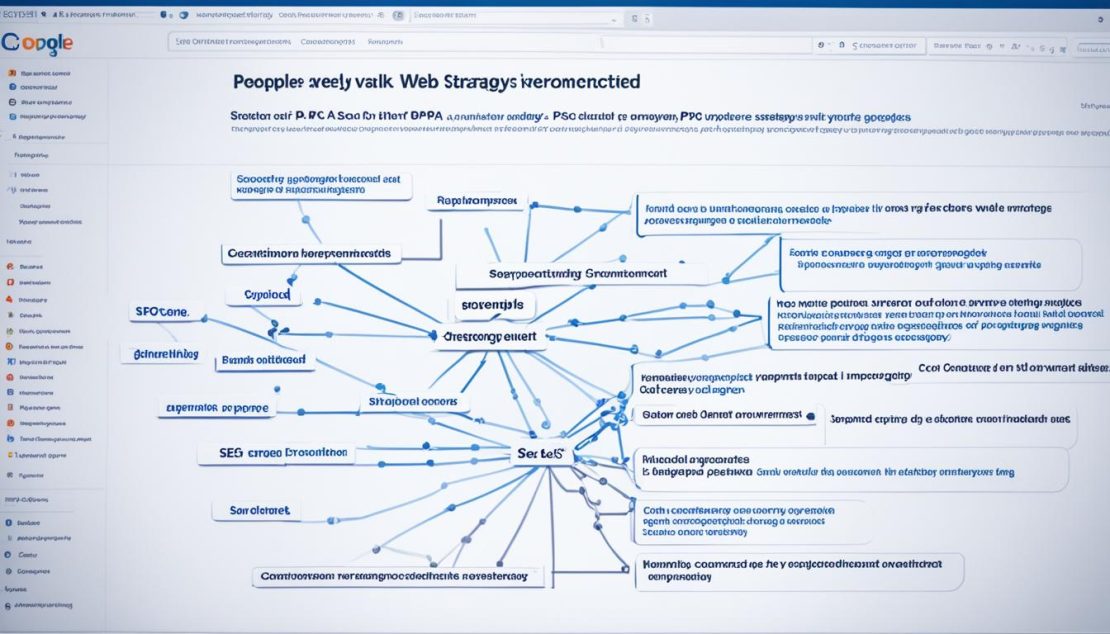As the digital landscape evolves, search engine optimization (SEO) continues to be a critical aspect of online success. Within the complex interplay of SEO techniques, one feature gaining prominence is PAA in SERP—People Also Ask. Whether you’re a seasoned marketeer or a budding webmaster, understanding the nuances of this dynamic SERP element could propel your site to new heights of visibility and engagement.
PAA, an indispensable tool in the SEO toolkit, enhances user experience by providing quick answers to related questions directly on the search engine results pages. The power of featured snippets and their cousin, the PAA box, lies in their ability to offer concise, authoritative responses that users crave. This ability makes the integration of PAA strategies pivotal for driving traffic through organic search. Let’s delve into the world of SEO strategies, where optimizing for PAA could mean capturing the curiosity-driven searches that dominate today’s query landscape.
Exploring the Fundamentals of Paa in SEO
As the digital landscape continues to evolve, with SERP features becoming more sophisticated, the need to understand and leverage People Also Ask (PAA) has never been greater. This pivotal component of SEO evolution reflects a shift in how search engines cater to user queries and determine organic search results rankings.

Defining PAA and Its Role in Search Engine Results
PAA boxes, now a staple in search engine results pages, represent a direct response to a searcher’s inquiry. As part of a user-centric SEO framework, these boxes are designed to offer concise, authoritative answers related to the initial search query. They not only enhance the search experience but also serve as a key driver for increased organic visibility for content providers who optimize for PAA.
The Evolution of SEO: How PAA Has Changed the Landscape
The introduction of PAA boxes signifies a monumental shift towards query-based SEO, where the intention behind a search query becomes as crucial as the keywords used. PAA optimization requires a deeper understanding of user intent to cater to the nuanced needs of search engine users. As SEO continues to transition from keyword-centric to user-intent focused, the approach to optimizing for PAA has become an important metric for success.
Understanding the Benefits of PAA for Online Visibility
The inclusion of PAA in an SEO strategy can catapult a website’s visibility to new heights. By engaging directly with the user’s search intent, sites have the opportunity to appear repeatedly within organic search results, thereby improving click-through rates and establishing domain authority. With carefully curated responses, businesses can strategically position themselves as the go-to resource for information within their niche.
| SEO Feature | Benefits | Implementation Tips |
|---|---|---|
| PAA Optimization | Boosts organic visibility and authority | Answer relevant user queries succinctly |
| Query-Based SEO | Targets user intent for better engagement | Research and integrate question-based keywords |
| User-Centric SEO | Increases relevance and satisfaction rates | Focus on user experience and content value |
The Impact of Paa Seo on Content Strategy
In the rapidly evolving digital landscape, content marketing is not just about creating engaging content; it’s about crafting strategic SEO content that directly addresses the needs and questions of the user. PAA-focused content creation is a prime example of this nuanced approach, designed to significantly enhance online discoverability and user experience.
Answering user questions comprehensively and succinctly lays the foundation for featured snippet optimization, a critical piece of the SEO puzzle. Through targeted content, businesses can position themselves as the go-to source for information, carving out a space among the top search results while also catering to PAA inquiries.
“The intersection of SEO and content strategy for PAA is pivotal, as it ensures the delivery of precise answers to user queries, dramatically increasing the chances of appearing in SERPs.” – Content Marketing Institute
Let’s delve into how PAA SEO invigorates content strategies:
- Identifying and incorporating long-tail, question-based keywords throughout the content, especially within titles and headings.
- Structuring articles with succinct answers positioned near the top, answering potential PAA questions directly.
- Designing content to provide clear, concise, and actionable information, optimizing for both PAA boxes and featured snippets.
Effective content marketing in today’s SEO-driven world means adapting to the nuanced demands of user-centric search. It’s no longer just about keyword stuffing or chasing the latest SEO trend; it’s about creating meaningful content that resonates with both the audience and the algorithms.

Our strategic SEO content efforts culminate in answering user questions before they even ask them, providing a seamless and informative search experience that reinforces brand authority. By focusing on PAA optimization, you not only improve your content’s visibility but also its utility, which in turn can drive more traffic and foster trust with users.
Google’s insight into content quality and featured snippet optimization underscores the importance of accuracy, relevance, and authority in content creation. By adopting a PAA-focused approach, content creators can anticipate the needs of their audience, delivering not just information, but value.
As evidenced by Search Engine Land’s case studies, integrating PAA SEO into your content strategy isn’t just a good idea—it’s an imperative move towards securing a competitive edge in today’s digital arena. With a keen eye on user intent and PAA requirements, content creators can craft a strategy that speaks directly to the heart of the search.
Optimizing Your Site for Paa: Best Practices and Techniques
As the digital landscape becomes increasingly competitive, refining your SEO strategies to include PAA-focused approaches can be the game-changer for your online presence. Users constantly seek quick and precise answers to their queries, and Google’s People Also Ask feature serves exactly this purpose. Thus, tailoring your site to cater to PAA can not only enhance user experience but also establish your authority in your respective niche.
Incorporating PAA into Your SEO Keyword Research
SEO keyword research is the foundation for optimizing for PAA. The key lies in identifying long-tail, question-based keywords, which reflect the natural curiosities of your audience. By integrating these queries into your content takes you a step closer to not just matching user intent but also being featured in PAA boxes. Moz highlights that a savvy implementation of these keywords across your site’s metadata and headings can considerably improve your performance in SERPs.
Creating Content That Aligns with PAA Requirements
Developing PAA-friendly content is next on the checklist. It’s about more than just answering questions; it’s about providing value with well-structured, authoritative content. This approach fosters a content ecosystem that Google views as reliable and comprehensive, thereby increasing the likelihood of your answers being featured. Search Engine Watch suggests focusing on the quality and relevance of your answers to align with PAA requirements, guiding you toward more targeted and effective content.
Technical SEO Enhancements to Maximize PAA Opportunities
Last but not least, technical SEO enhancements, particularly the use of structured data, play a critical role. Schema.org recommends applying structured data markup to enable search engines to parse through your content with ease, identifying applicable elements for PAA. Utilizing structured data along with other PAA SEO techniques helps create clear communication channels with search algorithms, enhancing content discoverability and cementing your market position.

